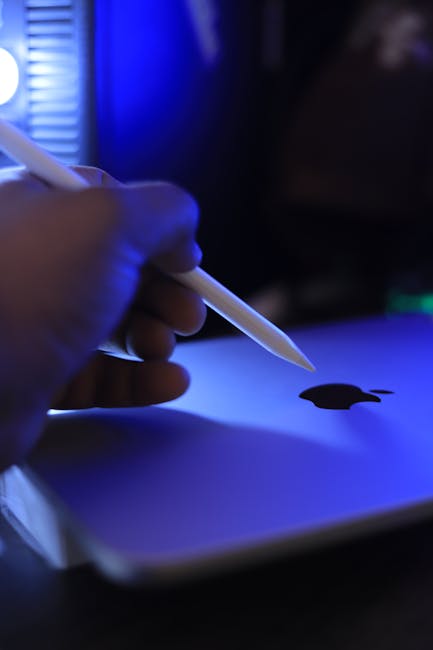
In a world oversaturated with generic logos and forgettable brands, it’s time to shake things up and weave a little culture and history into your company’s identity. Say goodbye to bland design and hello to Legacy Woven, the ultimate guide to infusing your logo with personality, pizzazz, and a whole lot of pizzazz. Get ready to stand out from the competition and leave a lasting impression that will have customers saying, “Now that’s a logo worth remembering!
The Importance of Cultural Legacy in Logo Design
When it comes to logo design, incorporating elements of cultural legacy can add a unique and meaningful touch to a brand’s identity. By drawing inspiration from traditions, symbols, and practices that have stood the test of time, logos can resonate with audiences on a deeper level. Here’s why cultural legacy should not be overlooked in the world of logo design:
**1. Authenticity:** Incorporating cultural legacy in logo design can help a brand establish authenticity and credibility. It shows that the brand respects and honors the heritage from which it comes, rather than simply appropriating a trendy aesthetic.
**2. Connection:** Cultural legacy in logo design can create a sense of connection and belonging for consumers. When people see familiar symbols or traditions represented in a logo, it can evoke feelings of nostalgia and bring them closer to the brand.
**3. Differentiation:** In a crowded marketplace, standing out is essential. By infusing cultural legacy into logo design, a brand can differentiate itself from competitors and create a memorable identity that sets it apart. Plus, it gives consumers a reason to choose a brand that values and celebrates their cultural roots.
Honoring Traditions through Symbolism
When it comes to , there are countless ways to pay homage to the customs and practices that have been passed down through generations. Whether it’s through a simple gesture or a more elaborate ritual, the symbolic significance of these traditions cannot be understated.
***Incorporating symbolism into our daily lives can add depth and meaning to even the most mundane tasks. From the way we greet each other to the foods we eat, every aspect of our lives can be infused with symbolism that connects us to our cultural roots.***
***One common way that people honor traditions through symbolism is by wearing specific colors or patterns that hold special significance. For example, in many cultures, the color red is associated with luck and prosperity, so wearing red clothing or accessories can be a way to invite good fortune into one’s life.***
***Another way to honor traditions through symbolism is by using certain objects or symbols to represent important values or beliefs. For example, the lotus flower is a common symbol in many Eastern cultures, representing purity and enlightenment. By incorporating images of the lotus flower into our homes or clothing, we can pay tribute to these cherished ideals.***

Weaving History into Modern Branding
In the world of branding, history is not just a thing of the past – it’s a powerful tool that can be woven into modern marketing strategies to create a truly unique identity. By tapping into the rich tapestry of human history, brands can create a narrative that resonates with consumers on a deep, emotional level.
One way to incorporate history into modern branding is by drawing inspiration from ancient symbols and motifs. Whether it’s the Egyptian ankh, the Celtic triskele, or the Chinese yin yang, these timeless icons can add a touch of mystique and depth to a brand’s visual identity. Plus, they look really cool on t-shirts and coffee mugs.
Another way to infuse history into branding is by highlighting the origins of a product or service. For example, did you know that the first ice cream cone was invented at the 1904 World’s Fair in St. Louis? By sharing this fun fact with consumers, a brand can create a sense of nostalgia and connection that goes beyond just the product itself.
Ultimately, is all about creating a story that captures the imagination and leaves a lasting impression. So the next time you’re brainstorming ideas for your brand, don’t be afraid to dig into the past – you never know what treasures you might uncover!

Significance of Authenticity in Logo Representation
When it comes to logo representation, authenticity is key. Having a logo that truly represents your brand identity can make all the difference in the world. Imagine trying to convince people that you’re a vegan restaurant, only for your logo to feature a big, juicy hamburger. That’s not going to fly. So, how can you ensure that your logo is as authentic as possible?
First and foremost, you need to know who you are as a brand. What are your values, your mission, your story? Once you have a clear understanding of these things, it will be much easier to create a logo that accurately represents them. You wouldn’t want your logo to be wearing a disguise, now would you?
Another important aspect of logo authenticity is ensuring that it resonates with your target audience. If your logo is confusing, misleading, or just plain boring, it’s not going to attract the right customers. Use colors, fonts, and imagery that speak to your audience on a deep, emotional level. Draw them in like a moth to a flame (but hopefully without the whole burning alive part).
Overall, the cannot be overstated. Your logo is often the first impression people have of your brand, so make it count. Be true to yourself, be true to your customers, and above all, be true to your logo. After all, it’s the face of your brand, and nobody likes a two-faced logo.

Balancing Tradition and Innovation in Logo Creation
When it comes to creating a logo, striking the right balance between tradition and innovation can be a challenging task. On one hand, you want to pay homage to classic design elements that have stood the test of time. On the other hand, you don’t want your logo to look like a relic from the past.
So, how do you blend the old with the new to create a logo that is both timeless and fresh?
- Start with tradition: Incorporate classic design elements such as simple shapes, clean lines, and traditional color schemes to give your logo a sense of history and gravitas.
- Put a modern twist on it: Take those traditional elements and give them a contemporary makeover. Experiment with bold fonts, vibrant colors, and unconventional layouts to bring your logo into the 21st century.
By , you can create a design that pays homage to the past while also looking towards the future. So go ahead, unleash your creativity and create a logo that stands the test of time!
Strategies for Infusing Cultural Elements into Logo Design
So you want to infuse some cultural elements into your logo design, huh? Well, you’ve come to the right place! Here are some strategies that will help you add a little extra spice to your brand:
- Research, research, research! Dive deep into the culture you want to incorporate into your design. Learn about the symbolism, colors, and patterns that are significant to that culture.
- Think outside the box (or should I say logo?). Don’t be afraid to get a little weird with it! Mix and match different cultural elements to create a design that is truly unique.
- Get feedback from people who are familiar with the culture you’re drawing inspiration from. They can help you ensure that your design is respectful and accurate.
Remember, the key to successful cultural infusion is to strike a balance between creativity and respect. So go forth, brave designer, and create a logo that will make cultural historians everywhere swoon!
FAQs
What is the importance of infusing culture and history into a logo?
Oh, let me tell you! By incorporating elements of culture and history into your logo, you are adding depth and meaning to your brand. It’s like giving your logo a rich backstory that connects with your audience on a deeper level. Plus, it sets you apart from the sea of generic logos out there.
How can I incorporate cultural elements into my logo design?
Get creative! You can research traditional symbols, patterns, or colors that are meaningful in your culture and find a way to integrate them into your logo. Just be sure to do it tastefully and respectfully – we’re going for cultural appreciation, not appropriation!
What are some examples of companies that have successfully infused culture and history into their logos?
Oh, there are so many good ones! Take a look at Starbucks with its mermaid logo inspired by maritime history, or Nike with its swoosh symbolizing movement and speed. These brands have elevated their logos from mere symbols to iconic representations of their values and heritage.
Does infusing culture and history into a logo limit its versatility?
Absolutely not! In fact, it can enhance your logo’s versatility by giving it a stronger identity and story. Just think of all the different ways you can creatively incorporate cultural elements into your logo – the possibilities are endless!
Weaving Together Your Unique Brand Legacy
As you embark on the journey of infusing culture and history into your logo, remember that your brand’s legacy is like a tapestry – woven with intricate threads of tradition, innovation, and creativity. Let your logo serve as a colorful and vibrant representation of your brand’s story, weaving together the rich tapestry of your heritage and values. So go ahead, embrace your roots and let your logo be a true reflection of the legacy you wish to leave behind. Here’s to weaving a masterpiece that will stand the test of time!











